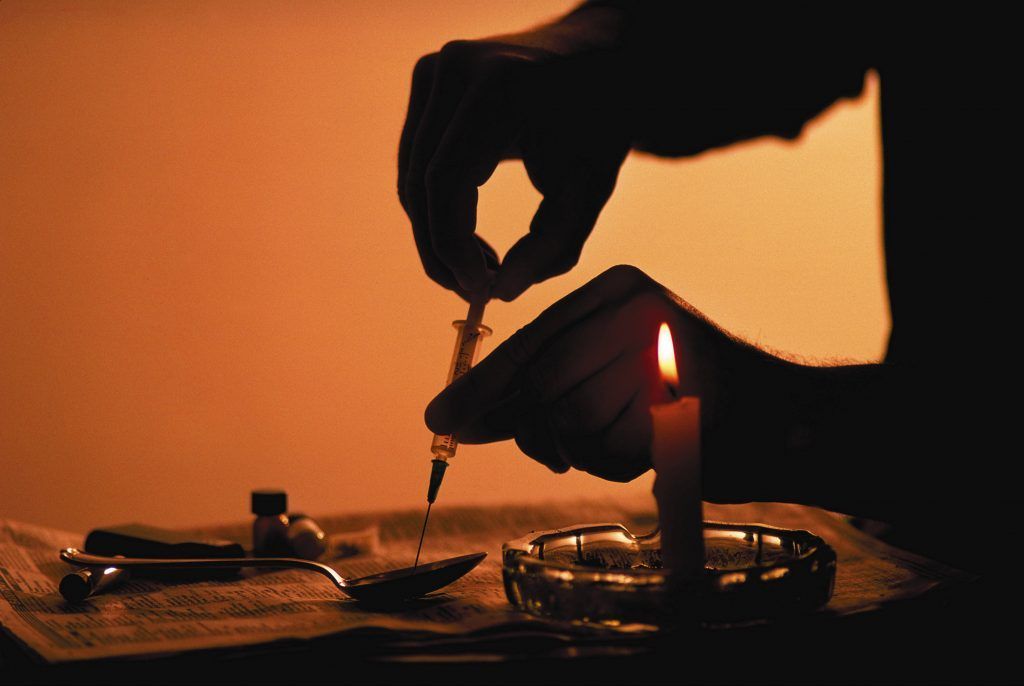What is Heroin?
Advance Minds Blog
A safe space to explore subjects within the community such as mental health, substance abuse and personal identity.
Our safe space also provides the opportunity for real individuals to express their hardships and success through writing.
What is Heroin

Heroin is a highly addictive and illegal opioid drug derived from morphine, which is extracted from the seeds of the opium poppy plant. Heroin can appear as a white or brown powder, or as a black sticky substance known as "black tar heroin." It is one of the most dangerous opioids due to its addictive nature and high risk of overdose.
How Heroin Is Used:
Heroin can be:
- Injected: The most common method, which provides a rapid and intense high.
- Snorted: Absorbed through the nasal tissues.
- Smoked: Often inhaled through a pipe or vaporized. Each method delivers the drug quickly to the brain, which increases the potential for addiction and overdose.
Effects of Heroin:
Heroin binds to opioid receptors in the brain, producing intense feelings of euphoria or a "rush." Other effects include:
- Pain relief.
- Drowsiness and relaxation.
- Nausea and vomiting.
- Itching.
- Severe respiratory depression (slowed breathing).
Risks and Dangers of Heroin Use:
- Addiction: Heroin is extremely addictive, both physically and psychologically. Dependence can develop quickly, leading to compulsive drug-seeking behavior.
- Overdose: A heroin overdose can lead to life-threatening respiratory depression, where breathing slows or stops altogether. Overdose deaths from heroin are common, particularly when the drug is mixed with other substances, such as fentanyl.
- Health Complications:
- Collapsed veins (from repeated injections).
- Infections: Such as HIV/AIDS or hepatitis C, often contracted from sharing needles.
- Liver and kidney damage.
- Infection of heart lining and valves (endocarditis).
- Chronic constipation and digestive issues.
4. Mental Health Problems: Long-term heroin use can lead to anxiety, depression, and severe cognitive impairment.
Symptoms of Heroin Addiction:
- Craving the drug and needing higher doses to achieve the same effects (tolerance).
- Withdrawal symptoms when not using, including nausea, vomiting, diarrhea, muscle pain, and severe cravings.
- Neglecting responsibilities at work, school, or home.
- Isolation from friends and family.
- Financial or legal issues due to drug-seeking behavior.
Heroin Withdrawal:
Withdrawal from heroin can be extremely painful and uncomfortable, though not typically life-threatening. Symptoms can begin within hours of the last use and may include:
- Intense drug cravings.
- Sweating, chills, and fever.
- Muscle and bone pain.
- Insomnia and agitation.
- Nausea, vomiting, and diarrhea.
Heroin Overdose:
An overdose can occur when a person takes too much heroin, especially if it is mixed with other powerful opioids like fentanyl. Symptoms of a heroin overdose include:
- Shallow or stopped breathing.
- Unresponsiveness or loss of consciousness.
- Blue lips and fingernails (indicating a lack of oxygen).
- Pinpoint pupils.
- Slow or erratic pulse.
Naloxone (Narcan) is an opioid overdose reversal medication that can temporarily reverse the effects of heroin overdose if administered in time, but medical attention is still required.
Treatment for Heroin Addiction:
- Medication-Assisted Treatment (MAT): Medications such as methadone, buprenorphine, and naltrexone are used to manage heroin addiction and withdrawal symptoms. These medications help reduce cravings and withdrawal symptoms, making recovery more manageable.
- Detoxification: Medical detox helps to safely manage withdrawal symptoms.
- Counseling and Behavioral Therapies: Cognitive-behavioral therapy (CBT), contingency management, and motivational interviewing can help individuals understand their addiction and develop healthier coping mechanisms.
- Support Groups: Narcotics Anonymous (NA) and other peer support groups provide community and encouragement for individuals in recovery.
Heroin and the Opioid Crisis:
Heroin is a major contributor to the opioid epidemic, particularly when it is mixed with fentanyl, an extremely potent synthetic opioid. Many people who become addicted to prescription painkillers eventually turn to heroin as a cheaper, more accessible alternative, which has fueled the rise in heroin use and overdose deaths.
Prevention and Awareness:
Efforts to combat heroin addiction include public education on the dangers of opioid use, widespread availability of naloxone to prevent overdose deaths, and improved access to treatment programs to help individuals recover from heroin addiction.
















